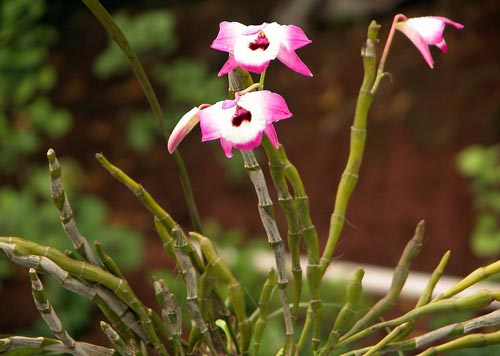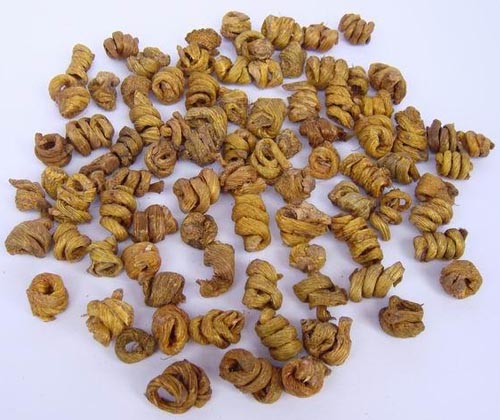The source is from the stem of the perennial herbage Dendrobium nobil Lindll., family Orchidaceae and other plants of the same genus. The medicinal material is mainly produced in the areas of Sichuan, Guizhou, and Yunnan, etc. Mter it is collected, its fibrous roots and impurity are removed and then it is dried in the sun and cut into segments. The crude or fresh can be used for medication.
Medicinal Properties: Sweet in flavor, slightly cold in nature and attributive to the lung, stomach and kidney meridians.
Actions: Nourish the stomach and regenerate the body fluids, and moisten yin and clear away heat.

Application
1. For dry mouth, excessive thirst, dry throat and dark red tongue due to consumption of the body fluids by febrile disease, it is usually combined with Shengdihuang ( Radix Rehmanniae), Maimendong ( Radix Ophiopogonis), etc. For yin-deficiency causing insufficiency of the body fluids and asthenic heat, it is usually combined with Shengdihuang ( Radix Rehmannia ), Baiwei ( Radix Cynanchi Atrati ) , Maimendong (Radix Ophiopogonis ) , and Xuanshen (Radix Scrophulariae), etc.
2. For insufficiency of stomach-yin manifested as dull or burning pain in epigastric region, poor appetite, dry mouth, constipation, little coated tongue, it can be combined with Zhuru ( Caulis Bambusae in Taeniam ), Baishaoyao ( Radix Paeoniae Alba ), Lugen ( Rhizoma Phragmitis), etc.; the fresh can also be used to treat diabetes and usually combined with Tianhuafen (Radix Trichosanthis ), Huhuanglian ( Rhizoma Picrorhizae ), etc.

In addition, it has the action of improving visual acuity and strengthening the waist and knees, it is usually combined with Juhua ( Flos Chrysanthemi ), Gouqizi (Fructus Lycii) and others to treat vision decreasing; combined with Shudihuang (Rhizoma Rehmanniae Praeparata ), Niuxi ( Radix Achyranthis Bidentatae ), etc., to treat weakness of waist and knees due to kidney-deficiency.
Usage and Dosage:
6 -15 g is used in decoction for oral use, the fresh is 15 -30 g.
Notes:
It is not suitable for early stage of seasonal febrile disease, and contraindicated for wet-warm or dampness-heat syndrome.







